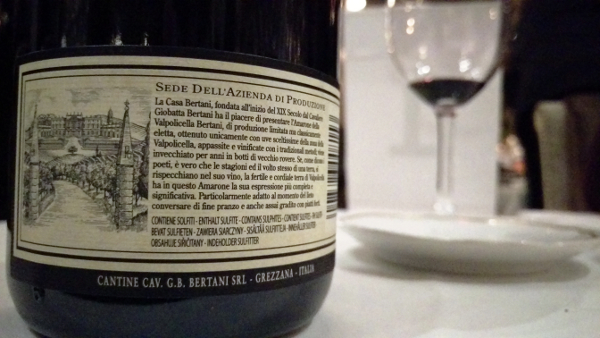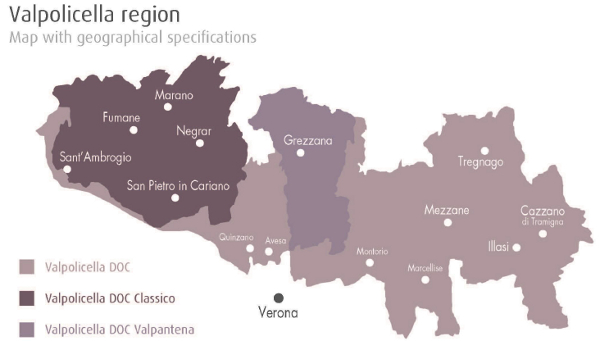You know the type – dark, brooding, and a bit austere in youth. He needs time to mature, relax, and develop into the strong, seductive and attentive lover he was born to be. Those like him are few, and far between. He makes his entrance only when all conditions align to make a superlative statement. His roots may be in a small multi-generational enterprise or a sprawling and noble estate. But when he finally arrives – he commands attention.
This is Amarone – the noble wine from Valpolicella, a region of Veneto, in northern Italy, an area with roots reaching back to rule by the Roman Empire, around 300 BC. Orstrogoths, Visigoths and Huns followed. Conquered by Napoleon, ceded to Austria, then invaded by Nazi Germany, the region lived through fascism as part of the Italian Socialist Republic under Benito Mussolini. After World War II, Italy entered NATO and the region regained strategic importance, due to its proximity to the Iron Curtain--the name for the boundary dividing Europe into two separate areas – the east, allied with Russia and the Soviet Union and the west, as part of NATO and allies of the United States.
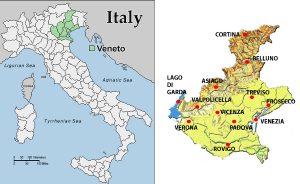 They say all is fair in love and war. It is fitting then, that Verona, home to the Valpolicella region, is the setting for Shakespeare’s Romeo and Juliet (or Guilietta on various historical markers in the city.) Verona also hosts Anteprima Amarone – the coming out party for the newest vintage release of Amarone. As part of the festivities hosted by Consorzio per la Tutela die Vini Valpolicella, I joined other wine journalists for tours of the vineyards and wineries, both grand and humble in Valpolicella, which includes Valpolicella DOC, Valpolicella DOC Classico and Valpolicella DOC Valpantena.
They say all is fair in love and war. It is fitting then, that Verona, home to the Valpolicella region, is the setting for Shakespeare’s Romeo and Juliet (or Guilietta on various historical markers in the city.) Verona also hosts Anteprima Amarone – the coming out party for the newest vintage release of Amarone. As part of the festivities hosted by Consorzio per la Tutela die Vini Valpolicella, I joined other wine journalists for tours of the vineyards and wineries, both grand and humble in Valpolicella, which includes Valpolicella DOC, Valpolicella DOC Classico and Valpolicella DOC Valpantena.
Valpolicella Wines and Grapes
The Valpolicella region of Veneto, established as a DOC (Denominazione di origine controllata) in 1968, produces four distinctive red wines: DOC Valpolicella, DOC Valpolicella Ripasso, and DOCG Amarone and DOCG Recioto. The styles of wines range from a lighter, nouveau (“drink now”) Valpolicella to the intense naturally sweet Recioto.
Valpolicella wines are made from three basic grapes, with others included for their aromatics. Native grapes are Corvina, first described in the 1824 works of the Italian botanist Pollini, for body, structure, color and longevity; Rondinella, described in the 1882 monograph of Verona, for color, drying ability and disease resistance; and Corvinone, first thought to be a sub-variety of Corvina in 1939, to provide body and acidity. Production rules require certain percentages of each grape. Corvina must be at least 45% of the blend up to 95% maximum. Rondinella can be from 5 to 30% of the blend. Corvinone can make up no more than 50% of the Valpolicella, Ripasso, Amarone or Recioto. Corvina must equal or exceed Corvinone. Corvinone replaced previously used Molinara, which boosted production but has low color extract and a tendency to oxidize. The Valpolicella wines can contain up to 25% of other grapes, but no one "other" grape may exceed 10%.
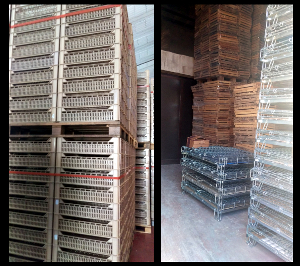 Each grape adds its own unique characteristics to the wines. If you taste the varieties separately, prior to making the wines, Corvina is cherry, plum and black pepper notes; Rondinella is cherry chocolate, almost like a Tootsie Roll or Cherry Tootsie Pop; and Corvinone notes are of exotic pepper with heady spices. Why are these grapes so important to the Valpolicella wines? These, along with Oseleta (a small dark berried grape used to add 'backbone') and Spigamonti (an old indigenous grape that adds color) are all particularly well suited to The Appassimento, or the slow drying process with gives the wines their intense flavor. Long part of the Venetian tradition with roots in the early Roman times, grapes are laid out on bamboo racks or straw mats to air dry, much like the Vinsanto of Greece.
Each grape adds its own unique characteristics to the wines. If you taste the varieties separately, prior to making the wines, Corvina is cherry, plum and black pepper notes; Rondinella is cherry chocolate, almost like a Tootsie Roll or Cherry Tootsie Pop; and Corvinone notes are of exotic pepper with heady spices. Why are these grapes so important to the Valpolicella wines? These, along with Oseleta (a small dark berried grape used to add 'backbone') and Spigamonti (an old indigenous grape that adds color) are all particularly well suited to The Appassimento, or the slow drying process with gives the wines their intense flavor. Long part of the Venetian tradition with roots in the early Roman times, grapes are laid out on bamboo racks or straw mats to air dry, much like the Vinsanto of Greece.
Alcohol Levels in Valpolicella Wines
There are minimum rules for the wine's alcohol content: 11% for Valpolicella Classico, 12% Valpolicella Classico Superiore, 12.5% for Valpolicella Ripasso Classico and 13% for Valpolicella Ripasso Superiore, 12% for Recioto della Valpolicella DOCG and 14% for Amarone della Valpolcella DOCG. Keep in mind those are rules for minimum alcohol. Many of those we tasted were 16% ABV and higher. This means in many U.S. states you will not find them sold in supermarkets.
Valpolicella vs Amarone: How are they different?
Valpolicella Classico is the everyday table wine of the region. It is medium bodied, ruby in color, fruity with high acidity. Grapes for Valpolicella are picked after the grapes for Amarone, and only fresh grapes, vs dried, are used. Soon after harvest the grapes are pressed and fermented, generally in steel tanks for a few months and made to be drunk soon after release. Some producers are experimenting with barrel aging. In contrast, Valpolicella Superiore must age for one year before it is released.
Pairing and Serving: Pair with dried or cured meats, salami, bruschetta or pizza.Serve at 14 to 16C (57F to 61F).
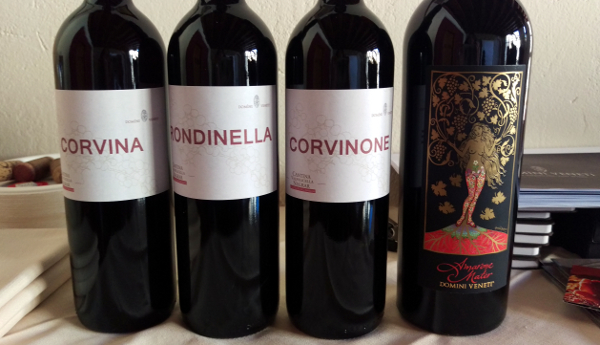
Amarone is an age-worthy wine with excellent cellaring potential. Valpolicella Ripasso, Amarone and Recioto all use some grapes that have gone through the appassimento.
It begins with Amarone, a deep, bright and intense red wine with a nose of dried cherry, currant, chocolate, tobacco and spices. Although it is definitely a dry wine, its finish is more like a Port than say a Cabernet Sauvignon.
For Amarone, the winemaker selects the best grapes of the vineyard for appassimento use, which are limited to 65% of the total yield in excellent growing seasons with allowance for 40% in more challenging years. The grapes are dried for at least 4 months, increasing intensity of flavor as well as their chemical compounds: for example some resveratrol compounds may increase more than 30 times from that in the original harvested grape. They are then gently pressed (never before December 1st following harvest). The wine must then age for a minimum of two years, but many producers hold their Amarone much longer before releasing it to the market. Amarone can be aged in steel and oak, and then longer in the bottle. They are typically bottled in the same shape bottle as Syrah, or a Chateauneuf de Pape. Prices tend to run higher than the other Valpolicella region wines.
Pairing and Serving: Serve Amarone with braised short ribs, a juicy "Cowboy" steak, stews, barbecued game or aged cheese. Serving temperature: 18 to 20C (65 to 68F).
Valpolicella Ripasso
“Valpolicella Ripasso wine,” says Christian Marchesini, Chairman of the Consorzio di Tutela Vini Valpolicella, “is an important driver for the designation, both as far as sales and the sphere of production balances of the Valpolicella PDO. With about 26 million bottles per year and an outstanding price-quality ratio, it is a driver for the other wines in many markets where Amarone is seen as a luxury product for special occasions.”
The winemaker creates Valpolicella Ripasso through a second fermentation (or repassed) by adding drained, still fermenting lees (unpressed skins) left over after Amarone della Valpolicella DOCG or Recioto della Valpolicella DOCG are racked to a different container for finishing. This second fermentation or Ripasso method adds color, tannins, richness and depth to the original Valpolicella wine. It also helps boost the alcohol level. It is then aged approximately one year. The Valpoicella producer Masi first marketed a "ripasso" wine in the early 1980s, but the word is used commonly today. Ripasso della Valpolicella received its own DOC designation in 2010.
Pairing and Serving: Valpolicella Ripasso pairs well with pot roasts, rich appetizers and game meat, as well as mature cheeses. Serve at 18C or 65F.
Recioto della Valpolicella is the oldest wine of Valpolicella produced in Roman times, and an ancestor to Amarone. Traditionally this was the wine of the region, ruby red, naturally sweet, and a bit spicy wine found on tables of wine growers and noble families. Prior to when "Recioto" was recorded in the mid 1800s, it was called Vin Santo or "Acinatico." Recioto comes from the Veronese word "recia" meaning ears, and refers to the higher lobes of the bunch that are closest to the stem, and most exposed to the sun. These bunches contain the highest proportion of sugar, glycerine and aromas.
It is said that Flavio Magno Aurelio Cassiodoro, Senartor and Prefect to the court of Ostrogoth Theodoric the Great called acinatico a regal wine with a particular taste and purple color. Its body is often described as sweet liquid meat or an almost chewable drink. A luxury wine in the region, its popularity declined at the end of the 1800s, when winemakers looked to make wine more tannic and "bitter." It made a comeback and earned its own DOCG in 2010. Nowadays only about 1 in 3 or 4 producers bottle a Recioto. Like Amarone, grapes are air dried for 4 to 5 months and then, but never earlier than January 1 after harvest, gently pressed, fermented and then aged in barrels and in bottle. Like most dessert wines it is sold primarily in 500 ml bottles.
Pairing and Serving: Recioto is an excellent alternative to Port and pairs well with sharp, soft cheeses like Stilton or Roquefort. I would love it with some oven-roasted bacon-wrapped Gorgonzola-stuffed dates. Serving temperature 14C or 57F.
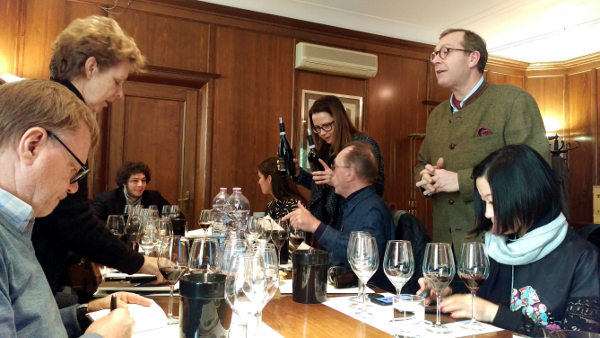
Anteprime Amarone and Wineries Visited
Prior to the start of Anteprima Amarone 2013 groups of 6 to 8 journalists set out from Verona each day to visit wineries and vineyards, based on personal choice and logistical convenience. I wanted to get a diverse experience, so I chose a mixture of small-family owned wineries, elegant and noble estates, those with both modern and ancient architecture, and upon recommendation of some trusted wine friends familiar with the area. Our next article would give the highlights of winery and vineyard visits to Ca' La Bionda, Domini Veneti, Corte Sant'Alda, La Collina dei Ciliegi, Sartori di Verona, Corte Aleardi Via Glare Latium Morini, Damoli and La Dama, I was also happy to see our friends from our 2012 trip to Puglia, Sicily and Chianti Alessandra Zambonin and Francesco Zonin at Zonin 1821 headquarters. Stay tuned for tasting and visit notes!
Cheers!
The WineWonkette

